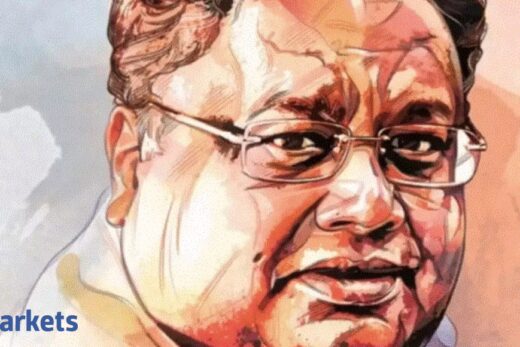There was underperformance from hydrocarbon sector in Q2.
Hydrocarbon orders were a little muted about 12-18 months ago. The low oil prices actually were not encouraging investments plus the entire shift towards ESG and greener fuel and stuff like that put some brakes on the investment. But I am glad to mention that the steady rise in the oil prices — from a business point of view — brings the investment rationale back on to the charts. Consequently, we find that the activity in the refineries and petrochemical space picking up and small evidence of that has been the order wins so far that we have had in the hydrocarbon sector both in the international and domestic markets.
For the third straight quarter, the infrastructure sector segment margin has expanded by 200 bps. This is despite steel prices, cement prices and various other prices going up across the board. Is this the new normal? Has L&T found a way to beat the uptick in commodity prices in a very big way?
I do not think we should define it as a new normal because project business and particularly infrastructure projects are drawn over a four-five years period for execution. The margins arrangement between the quarters depends on the progress that the jobs make in their execution. We have been historically following a very conservative way of accounting profits on all these jobs. Only when the jobs reach a certain margin threshold level, completion level, do we recognise the margin.
For example, the margins are not recognised until jobs reach 25%. Other sets of margins are released when the job reaches 50%, 75%, 90% and so on. So depending on the mix of jobs which are reaching a certain margin recognition threshold in a quarter, we will have volatility in terms of margins. But given that we have a very large order book and fairly stable operations during the course of the year, on a year-to-year basis, despite the economic cycles, we have been able to consistently report steady margins and that is largely because of the scale at which we operate.
It is true that in a particular period — last six months — we have had headwinds in terms of commodity prices, input costs, huge transportation cost, rising oil prices and hence rising energy costs and stuff like that. But in a project business, there are several levers at play. When we bid for projects, we bid with some inflationary assumptions in the jobs because we are anticipating costs three years, four years ahead of time.
It is not possible to bid for jobs, pricing it at the current cost. So some amount of inflationary elements exist in the pricing. Secondly, almost 67-68% of our contracts have price variation clauses in-built and that is the nature of the beast. All these long drawn infrastructure projects have this contractual flexibility to readjust input prices as we go along, based on some transparent well understood indices. That also comes in the way of helping some amount of stability to the margin when we are talking about periods of high inflation as we have seen now.
The third is of course what we call star price contracts where the input prices are mapped one to one and to that extent, the clients take the responsibility of the cost pass through either up or down. We then have a certain portion of the contracts — maybe 10% to 15% — which are open which means their exposure on account of inflation affects the margins. But in the last six months or so, we have had a fairly favourable mix of projects which have been able to tide over the headwinds or inflation and provide stability to the margins.
How would you look at the capex cycle in India? For the first time, there is optimism regarding materials and infrastructure; money is flowing to the road and real estate sectors. How would you look at the optimism in and around that and how is L&T placed to benefit and gain much more from that?
The tendering activity has picked up during the course of the year. We had almost Rs 150,000 crore worth of bids that were put out in quarter one of the current year and about Rs 2 lakh crore worth of tenders put out in Q2. So, to that extent, a certain momentum is building up. The country is also committed to build the infrastructure. It has also attempted to part finance this build up through asset monetisation programme etc.
Many of the infrastructure projects are also funded by multilateral agencies because they see it as a good opportunity because India needs this infrastructure badly and India has been a stable market by and large and international agencies have not lost money in India.
So there is a certain amount of optimism among the funding agencies to fund these projects. Consequently, the levers that favour investments have improved. The fact that the material prices have gone up has provided certain wings to the minerals and metal sector and derivative sectors because they see an opportunity to expand capacity to take advantage of the pricing that is available in the market. We expect some investments there.
The huge growth in the IT and the technology services sector has brought into play some amount of capacity augmentation even if we are now given increasingly to believe that it will be a hybrid system of working where some people work from home and some people from office but nevertheless, the growth momentum in the sector has created opportunity for us to look at some investments that have been made in that sector.
Another area where a lot of investment are getting spoken about is in the area of data centre. India, given its move towards clean green energy and given its capacity to house large data centres, the global hyperscalers are looking to India for posting their data centres and the government is also increasingly pushing the digital agenda and given the fact that there is going to be data privacy and data residency issues, India will see an opportunity in the build up of data centres as well. These are over and above the traditional investments that take place in the area of water, in the area of transportation infrastructure, particularly the urban transportation and in the area of power distribution infrastructure. So, social infrastructure is getting built.
Large programmes like the high speed rail etc. has created an opportunity for a lot of ancillary investments along the railway corridor. We need onloading and offloading terminals. We need warehousing infrastructure, hub transportation etc. All this as a chain reaction creates a potential for investment. We look at this space with a lot of optimism from a three year-five year perspective. I think India has a lot to gain through these investments and the only point that needs highlighting is it has to be built efficiently. We cannot afford the kind of delays that happens after a project is announced. So consequently, we hope that the government and the recent announcement of Gatishakti etc. is indication that the government is serious about monitoring implementation and if this really plays out well, in the next four-five years, I see India in a very good place as far as investments go.
L&T is remarkably well placed in all of this because of just the width of the infrastructure capability and the engineering capability. If any of these areas see investment traction, that would benefit L&T in a significant manner.



